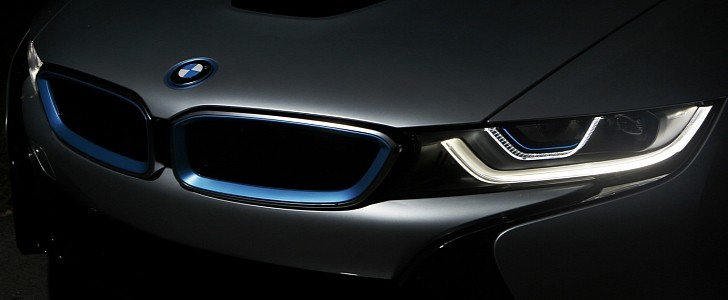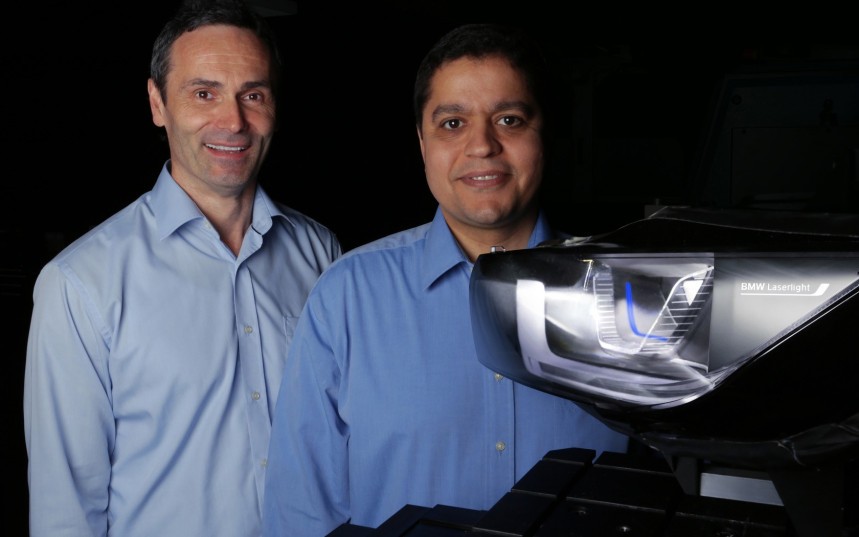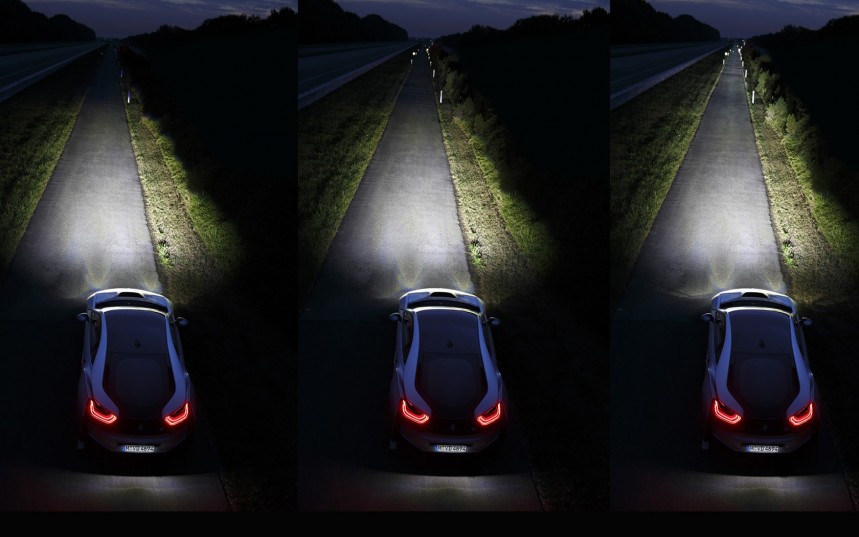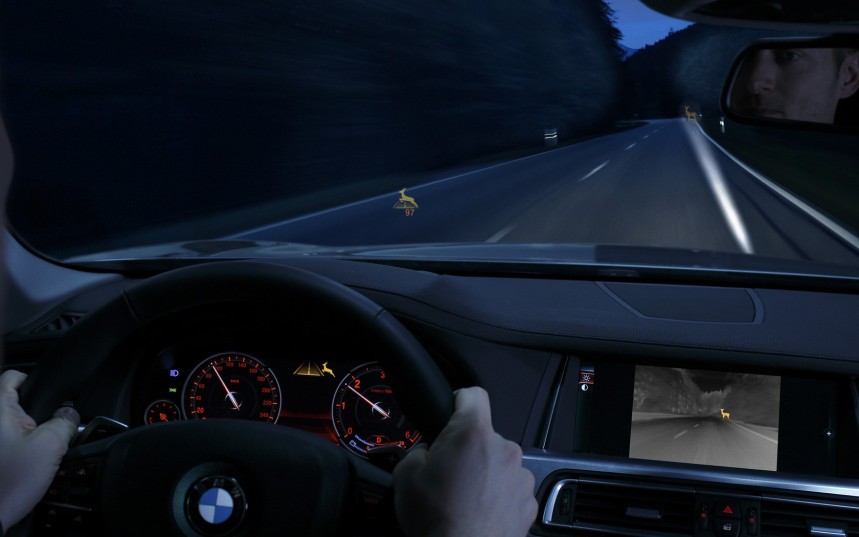The German manufacturer continues to bring innovative technologies to the market, and one highlight of these technologies is the LaserLight system that revolutionized BMW headlights.
Designed with the our safety in mind, they help us see farther down the road at night, without blinding oncoming traffic, and without the use of any buttons or switches.
BMW markets them as being the most powerful headlights, with lightning up to ten times brighter than conventional LEDs, while also consuming less energy.
The technology was first introduced in 2011 at the Frankfurt International Motor Show and the first BMW model to feature it was none other than the innovative and efficient i8 sportscar.
Dr. Abdel Hanafi was the mastermind behind BMW’s lightning innovation, and brought the project to life with the help of Dr. Helmut Erdl, receiving the renowned Leibinger Innovation Award in 2014 for this achievement.
Before we get into the details of how it works we must sadly inform you that the LaserLight technology does not enable drivers to shoot lasers at oncoming traffic, as some might think. Even though this Star Wars-like feature would be useful to clear traffic.
Instead, the headlight equipped with this technology directs three monochromatic blue laser light beams through a series of mirrors found in the main housing.
Light is directed onwards through a lens filled with yellow phosphorus. The blue laser light interacts with the yellow phosphorus and generates an extremely bright white light that is directed towards the road.
The light generated is up to ten times brighter than the light generated by conventional LED headlights. The assembly for this laser technology is small, allowing for the overall size of the housing to be compact and enables the sleek design we see on current models.
Another crucial factor of this innovative system is efficiency. Compared to traditional systems, it needs 30% less energy to function.
BMW admits that, since the technology is brighter than those used by conventional headlights, it may be a distraction in an urban environment. Due to this, it is only active at speeds above 37 mph (60 kph).
Increasing road visibility through this enhancement exponentially improves safety. An integrated infrared camera system works together with the headlights to detect oncoming traffic. It sends a signal to the control unit which automatically dims the headlights, without the driver’s input being needed.
If the camera system detects obstacles on the road such as a stopped vehicle, a pedestrian or an animal, the headlights will focus the beam directly on the object from up to 300 feet (92 meters) away.
Another especially useful feature is the ability to predict upcoming turns on the road, communicating with the car’s GPS unit.
It took a couple of years for this technology to be approved for use on U.S. roads, and it is currently available (and legal) on cars such as the X5, the new 4, 7 or the 8 series.
The LaserLight is an example of the Bavarian carmaker's commitment to innovation and safety. The future is bright and brilliant for this system as BMW expands and improves it by applying it to more of their cars and even motorcycles.
BMW markets them as being the most powerful headlights, with lightning up to ten times brighter than conventional LEDs, while also consuming less energy.
The technology was first introduced in 2011 at the Frankfurt International Motor Show and the first BMW model to feature it was none other than the innovative and efficient i8 sportscar.
Before we get into the details of how it works we must sadly inform you that the LaserLight technology does not enable drivers to shoot lasers at oncoming traffic, as some might think. Even though this Star Wars-like feature would be useful to clear traffic.
Instead, the headlight equipped with this technology directs three monochromatic blue laser light beams through a series of mirrors found in the main housing.
Light is directed onwards through a lens filled with yellow phosphorus. The blue laser light interacts with the yellow phosphorus and generates an extremely bright white light that is directed towards the road.
Another crucial factor of this innovative system is efficiency. Compared to traditional systems, it needs 30% less energy to function.
BMW admits that, since the technology is brighter than those used by conventional headlights, it may be a distraction in an urban environment. Due to this, it is only active at speeds above 37 mph (60 kph).
Increasing road visibility through this enhancement exponentially improves safety. An integrated infrared camera system works together with the headlights to detect oncoming traffic. It sends a signal to the control unit which automatically dims the headlights, without the driver’s input being needed.
Another especially useful feature is the ability to predict upcoming turns on the road, communicating with the car’s GPS unit.
It took a couple of years for this technology to be approved for use on U.S. roads, and it is currently available (and legal) on cars such as the X5, the new 4, 7 or the 8 series.
The LaserLight is an example of the Bavarian carmaker's commitment to innovation and safety. The future is bright and brilliant for this system as BMW expands and improves it by applying it to more of their cars and even motorcycles.












